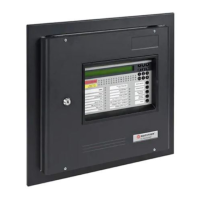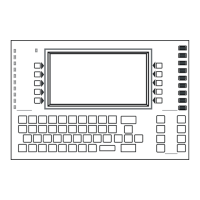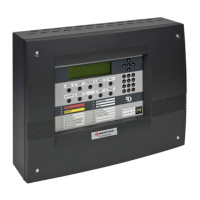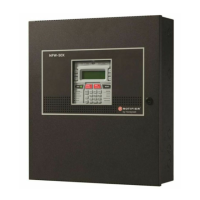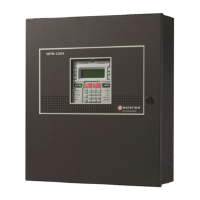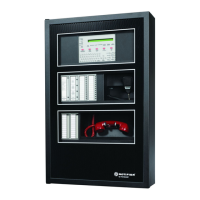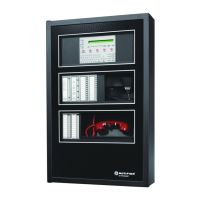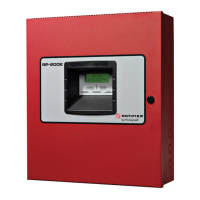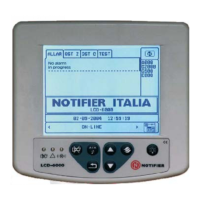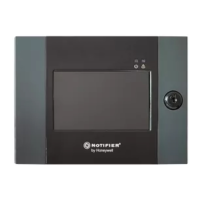
Do you have a question about the Honeywell NOTIFIER N16 and is the answer not in the manual?
| Type | Fire Alarm Control Panel |
|---|---|
| Voltage | 120/240 VAC, 50/60 Hz |
| Operating Temperature | 32°F to 120°F (0°C to 49°C) |
| Number of Zones | 16 |
| Compatibility | conventional devices |
| Style | Conventional |
| LED Indicators | Alarm, Trouble, Supervisory, AC Power |
| Buttons | Drill |
| Relative Humidity | Up to 93% RH, non-condensing |
| Agency Listings | FM, CSFM, MEA |
Features of the 10-inch touchscreen, power supply, and basic panel operations.
Details on SLC capacity, detectors, and modules per loop.
Information on network capabilities, display modes, and cloud connectivity.
Specifications for core board connections (TB2-TB8) and PMB power supply.
Specs for SLM-318 module and maximum system capacity for devices and network nodes.
Overview of the N16 touchscreen display layout and its interactive zones.
Description of the Power LED and Off Normal LED status and meaning.
Details on USB-C, USB-A, and USB-Micro port locations and their functions.
Procedures for exporting panel history and diagnostic data to USB drives.
How to perform a lamp test and view/filter panel history events.
Information on accessing and logging cybersecurity events for security audits.
Functionality for drift compensation and CLSS connected capabilities.
Details on remote access, communication sessions, and service mode operations.
Information on FlashScan and CLIP polling styles and device limits per SLC.
Details on CGW-MB format, TCP/IP, and interconnected panel communication.
Explanation of the display's automatic conditioning mode to prevent image persistence.
How to customize the alert bar for displaying a configurable number of events.
Features for alarm verification to reduce false alarms and pre-signal/alarm delay.
How fire alarms are indicated on the header bar, alert bar, and LEDs.
Step-by-step guide for acknowledging and silencing fire alarms.
How trouble conditions are indicated on the header bar, alert bar, and LEDs.
Steps for acknowledging and resolving system trouble conditions.
How carbon monoxide alarms are indicated on the header bar, alert bar, and LEDs.
Guide for acknowledging and silencing carbon monoxide alarms.
Indicators for events categorized as 'Other' and their priority.
Steps for acknowledging and silencing various 'Other' events.
How supervisory events are indicated on the header bar, alert bar, and LEDs.
Guide for acknowledging and resetting supervisory events.
How disabled points are indicated on the header bar, alert bar, and LEDs.
Steps for acknowledging and enabling disabled points.
Warning about disabling zones and their impact on mapped devices.
Procedures for periodic system testing, operational checks, and battery maintenance.
